#Elsa Dorlin
Text
Elsa Dorlin – Kendini Savunmak (2024)
Bir yatak odasının sessizliğinde, gece yürünen ıssız bir yolda, toplama kampında, zindanda ya da politik bir hareketin kılcal damarlarındaki şiddet döngüsünün işleyişi hangi temellere dayanır?
İktidar ilişkilerinden ayrı düşünülemeyecek bir tahakküm mekanizması olarak şiddet, madun bedenlerde ve zihinlerde ne gibi yaralar açıyor?
Yaşam mücadelesi veren ezilen halkların ölüm türleri arasında bir…

View On WordPress
0 notes
Text
[Fuori le palle][Victoire Tuaillon]
Che cosa vuol dire essere uomo oggi? Victoire Tuaillon indaga l’aspetto storico, sociale, filosofico e filologico del dominio maschile, affrontando i temi più attuali e controversi della mascolinità in un racconto teso a capirne meccanismi e conseguenze. Quando nasce il mito della virilità? Perché le città, gli oggetti d’uso quotidiano e il mondo del lavoro sono declinati al maschile-neutro? Cosa…
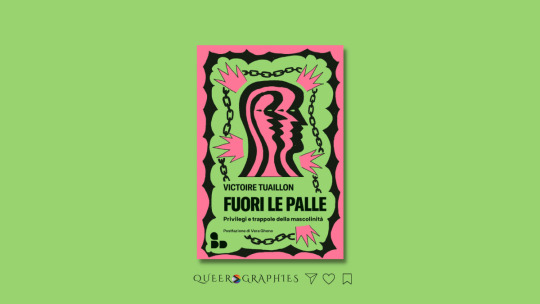
View On WordPress
#2023#ADD Editore#Chiara Licata#Didier Eribon#Elsa Dorlin#Federico Manzone#Francia#Fuori le palle#Giulia De Marco#Les Couilles sur la table#LGBT#LGBTQ#Maïa Mazaurette#Manon Garcia#nonfiction#Olivia Gazalé#Paul B. Preciado#Privilegi e trappole della mascolinità#Vera Gheno#Victoire Tuaillon#virilità
0 notes
Text
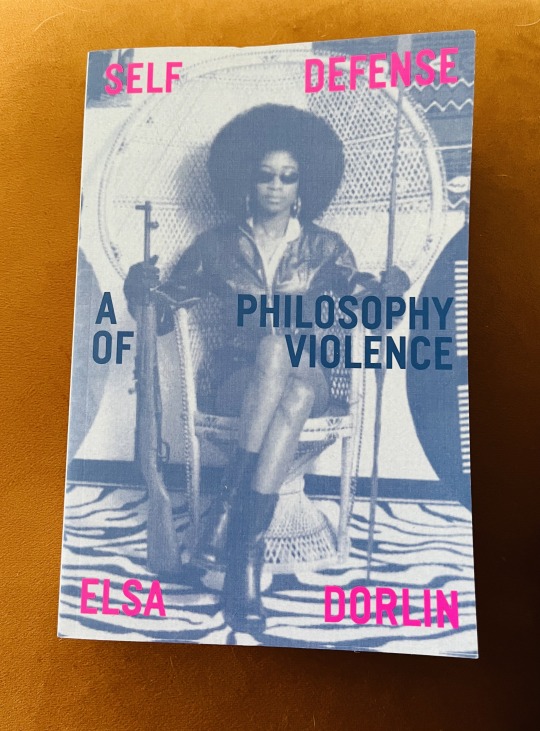
"The very possibility of defending oneself is the exclusive privilege of a dominant minority. In the case of the beating of Rodney King, the state (through the intermediary of its armed representatives) was not regarded as violent, but as reacting to violence... Conversely, for Rodney King, as for every other body victimized by this rhetoric of self-defense, the more he defended himself, the more indefensible he became."
-Elsa Dorlin, Self Defense, A Philosophy of Violence
#elsa dorlin#acab#leftist#communism#socialism#defund police#police#politics#poc#self defense#police brutality#rodney king#state
1 note
·
View note
Text
At some point if you consider yourself to be involved politically yet cannot conceive the fact that violence can be used strategically by ethnic minorities or other oppressed groups in order to fight back and defend themselves then idk what to tell you...But for me personally armed resistance is 100% valid. The world's cruel, why should we let our people die if we can do something about it? Anyways just read Elsa Dorlin's book!
#my philosophy teacher in high school introduced us to elsa dorlin's work#and it's so good#i hope her work is available in english too
1 note
·
View note
Text
Least fav pairings:
Not canon
Elsa x Jack Frost
Fluttercord
Anything with Alastor in it
Tokka
Rider x Horse
Any ship in Five Nights at Freddy's
Oncest garbage
Dorlin
Vanellope x Ralph
Basil x Olivia
Mad Hatter x Alice. All of them. Ever. blah...
Lock x Shock
Hekapoo x Marco
Canon ships I think suck
LydiaJuice
Hyzenthlay x Hazel
Human Kimberly x Gordon
Mrs. Lovett x Sweeney Todd
Gwen x Duncan
Derek x Odette
Can I possibly dislike every pairing in Legend of Korra?
Soriel
Stolitz
Complete NOTP shit:
Lolita. It's not romantic. Go to jail.
Any incest shap, which is a lot and which I don't wanna think abt or name out loud so I'm just gonna mark that down as an "ew".
Explainations for why coming never (maybe...IDK)
#beetlejuice#the great mouse detective#the swan princess#my little pony friendship is magic#centaurworld#The Lorax#Onceler#wreck it ralph#Catscratch#Undertale#Total Drama#Watership Down#Hazbin Hotel#Helluva Boss#Finding Nemo#five nights at freddy's#Alice in Wonderland#the nightmare before christmas#Avatar: The Last Airbender#Sweeney Todd#Rise of the Gaurdians#Frozen
24 notes
·
View notes
Text
WHAT I READ IN 2023
all the books i read this year, not counting DNFs or books that i'm still working through (the Wiliad and Genji are on brief hiatus while i'm traveling over the holidays). an asterik marks a reread, but this was largely a year of new reads for me. shorter than previous years but with several long and/or dense texts. i also went into this year with the goal of intentional reading (what purpose does this serve?) and i feel like i fulfilled that. i welcome any and all asks about this list! i'm going to reblog an end of year book ask lists so if you want to reference any books in particular feel free!
fiction
IT - Stephen King
Embassytown - China Mieville
Hell Bent - Leigh Bardugo
Summer Sons - Lee Mandelo
Lolita - Vladamir Nabokov
The Haunting of Hill House - Shirley Jackson
Matrix - Lauren Groff
The World We Make - N.K. Jemisin
Yellowface - R.F. Kuang
The Late Americans - Brandon Taylor
The Name of the Rose - Umberto Eco
Sula - Toni Morrison
The Terror - Dan Simmons
Fledgling - Octavia Butler
Lone Women - Victor Lavalle
Holly - Stephen King
Out There Screaming - ed. Jordan Peele
Biography of X - Catherine Lacey
Our Share of Night - Mariana Enriquez (trans. Macdowell)
Babel - R.F. Kuang
Family Meal - Bryan Washington
comix/graphic novels
Far Sector - N.K. Jemisin
Earthdivers - Stephen Graham Jones
Nightmare Country: The Glass House - James Tynion IV
She Bites - Hedwig Hale and Alberto Hdez
Something is Killing the Children Vol. 1-3 - James Tynion IV
poetry
Bless the Daughter Raised By the Voice in Her Head - Warsan Shire
Promesas de Oro - José Olivarez
nonfiction
Self-Defense: A Philosophy of Violence - Elsa Dorlin
How to Go Mad Without Losing Your Mind - La Marr Jurelle Bruce
Hijab Butch Blues - Lamya H
The Rise and Fall of the Dinosaurs - Steve Brusatte
Ordinary Notes - Christina Sharpe
Weavers, Scribes, and Kings - Amanda Podamy
Unpayable Debt - Denise Ferreira de Silva
Creep - Myriam Gurba
All Incomplete - Fred Moten & Stefano Harvey
The Undercommons - Fred Moten & Stefano Harvey*
Alien Daughters Walk Into the Sun - Jackie Wang
Mestizo: Critical Uses of Race in Chicano Culture - Rafael Perez-Torres
Black Trans Feminism - Marquis Bey
4 notes
·
View notes
Text
egw: kserw gallika
episis egw: nee stile mu to teuxos tis otonom pu metafrazis elsa dorlin 🌸, tha diavaso to kimeno sta turkjka (den kserw turkika) 🤝
2 notes
·
View notes
Text
BLOG POST 3 - CMS/PL 348
COMMENT ON READINGS:
Authors Elsa Dorlin (Author) Kieran Aarons (Translator) Print Book2022English-language edition.
AND Butler, J. (1993) ‘Endangered/Endangering: Schematic Racism and White Paranoia’, in Gooding-Williams, R., Reading Rodney King Reading Urban Uprising, New York and London: Routledge.
Elsa Dorlin identifies the historical roots of racial violence in the US in the right to self-preservation, and most importantly in the correlated right to armed self-defense. This latter originated in the Anglo-Saxon legal culture, and was then incorporated in the US Constitution. The right to armed self-defense’s origins are to be found in the need to increase the force for policing or military purposes, together with the right to own a weapon. The right to armed self-defense seemed to be understood as a “natural” right, but this raised the question of whether it was a non-derogable right for every individual to defend themselves, or if it was a right only reserved to citizens’ militias. Indeed, not everyone had this right, and certainly not Black people ... Just owners of property could completely exercise this right to self-defense, as it also involved property. Notwithstanding the laws implemented in England that regulated civilians’ arms, these rules did not consider properly the political question of self-defense, nor the disorder that an armed population would cause. Anyways, the Parliament in England restricted individuals’ manifestations of privileges to become vigilantes.
The history of the right to armed self-defense is intertwined with the rise of the liberal state – with its emphasis on property, and the right to privacy – and of judicial organizations. Up until the 19th century, just the wealthiest people could afford legal proceedings, due to the high cost of justice. As a consequence, protests and public meetings for the inability of the legal system to protect people and their property gave rise to prosecution societies. These societies consisted of the gathering of material, money, and human resources to contribute to the price of investigations, legal counsel, arrest and detention of criminals. They were formed to supplement the law and the justice system, that was deemed dysfunctional in protecting citizens and their property. In this way, people were capable and entitled to protect their property, by harming or even fatally shooting at other people, without waiting for the judicial system to do it. Generally, where the state does not arrive, someone else intervenes to fill the void, often leading to dangerous consequences. This recalls the way Mafia groups act in Italy: when immigrants land in Italy and need to gain money to live, the state is not there to help; so, there is when Mafia intervenes to give them a “job”, or better an opportunity. Basically, Mafia groups provide private protection of property rights and economic transactions that are not given by the state.
The right to armed self-defense raised a debate in American political culture. On the one hand, there was the argument wanting to restrict the use of weapons of individuals, leaving armed self-defense to militias, while others argued that it was a part of American citizenship that could not be eliminated. For the first time, the right to self-defense was understood as the citizens’ right to take weapons, and rely merely on their own judgement for their use, to defend themselves and their property, which became a crucial factor in American nation. The Second Amendment of the US Constitution protects the right of citizens to have and bring arms for their defense. This was confirmed even recently, despite the situation in the US, when in 2008, there was the Court’s historic decision ruling against the District of Columbia, prohibiting citizens from keeping arms in the houses. As a matter of fact, the issue of gun control is still very current in the US, where shootings are frequent, not only of Black people, but also of children in schools.
Indeed, self-defense is a key element of the colonial and racial history of the US, as well as its legitimization. The members of prosecution societies were portrayed as eternal pioneers who defended themselves against threats, fighting for the country, pushing back frontiers, creating cities on what was identified as the enemy’s territory, killing Indigenous people, seen as barbarians. This narrative gave a romantic vision, creating the myth of the white hero protecting the land, property, and money, thus romanticizing their violence. These groups are known as “vigilantism”, in support of armed self-defense, together with racist rhetoric. Vigilantism, what was a form of human hunting, constitutes one of the roots of white supremacy, the birth of the racial state and its legitimization – as put by Alexandre Barde. Vigilantism became one of the biggest representations of racist American criminality. The culture of early vigilantes as defenders of the nation, fostered the narrative of the supremacy of the white race, making it a reality.

It should go without saying that these vigilantes were far from being judges bringing justice. On the contrary, vigilantes wanted to get rid of judges, by presenting themselves as guards, police, and executioners. There were no procedural codes, no equity, nor the right to presumption of innocence, and not even right to a fair trial for the accused person. Punishments included reparations within a period of time, and when not respected floggings and banishment, as well as hanging for recidivism. These punishments were a mean to wipe out undesirable men seen as threats to white colonial society. In this way, they transformed the right to self-defense, into defense which was always legitimate; thus, any act of violence, in particular towards the black race.
As opposed to the representation of Lady Justice blindfolded, to symbolize her being impartial, making justice publicly (as in the picture below), vigilantes are depicted with masks to hide their faces and act at night – which can be interpreted as cowardly behavior. They are biased and without pity, moved by a desire to punish, in the name of “racial justice”, persecuting and executing the enemies of white society: those who are Black.
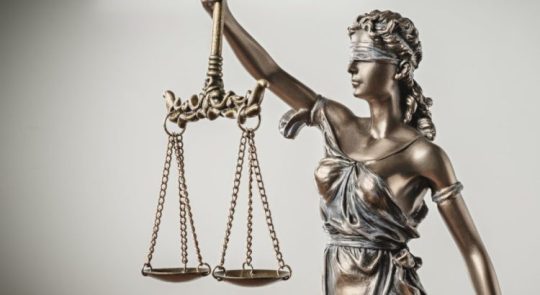
Vigilantes’ groups were associated with lynchings. They were authorized by law to disobey the law, which is in itself a contradiction. It is already paradoxical that vigilantes’ groups came from prosecution societies, formed to supplement the law, to protect people and their property. Hence, its members were supposed to have some sense of justice and morality. However, everything they did was dramatically violating the laws, and rights of people, but all of this in the name of some sort of justice. Their acts were excused by the immediacy of the threat, but without defining how immediate a threat had to be to act with violence. Is it sufficient to feel threatened to use an arm in the name of self-defense? This question obviously even read with today’s perspective is very problematic. For instance, a man could easily claim that he felt threatened just because there was a Black man running close to him, perhaps who in reality was minding his own business, running to catch a bus.
This example is especially realistic considering the white paranoia which will be discussed in the following paragraphs, with regard to Rodney King’s beating by the police (TW: violence) on March 3rd, 1991, who was seen by the courtroom to be about to do something harmful. This was the first video of police brutality, showing a Black man being repeatedly and brutally beaten without resistance. Common sense would tell us that the more videos/images, the more visual evidence brought to court, the more justice! However, for how strange this may sound after watching the video, in this case, the video actually contributed to making Mr. King into a perpetrator, rather than the victim. Then, one might think that the court pretended not to see, or did not watch the video at all. However, it was a matter of reproducing the video within a “racially saturated field of visibility”, meaning a terrain full of racism, in front of an audience that watched the evidence with biased lenses, and that would have read the recording aggressively from King's part a priori, regardless of what the images really demonstrate. The jury was in favor of the police officers’ acquittal because some frozen frames from the video, put out of context and without audio, were analyzed, and they seemed to them testifying Rodney King being about to do something, with the intent to injure the officers. Therefore, the court saw in the violence of the police reasonable actions in the name of self-defense.
This is the quintessential example of visuality as a tool to reorient the gaze, proving that Mirzoeff was right when he said that images never speak for themselves. The reason for which the court saw R. King being about to attack the officers in the video lies in the unconscious biases, and in “white paranoia”. This is a similar example of when at the time-Secretary of State Colin Powell, during his speech at the UN in 2002, showed some orchestrated images, claiming that they showed the sites of weapons of mass destruction in Iraq. Also in that case, the public had pre-concept biases, and saw what Powell wanted them to see. Similarly, in R. King’s case, the visual representation of the Black man’s body being beaten by police was taken by the racist interpretative framework to make King the perpetrator of violence. So, the white paranoid audience, by watching King, formed a narrative consolidating the racist figure of the Black man who is a threat, thus is being justly restrained. As F. Fanon argued, the white male racist feels helpless, and perceive the Black make body as dangerous, creating anxiety prior to any gesture. Its fear is that the physical distance will be crossed, and whiteness could be compromised. In addition, since they see the police as protecting whiteness against violence of the black man, the police’s violence, even in advance, is understood as right and necessary. Following this problematic reasoning of white racist imaginary, King is beaten for the harm that he did not do, but that he – just for being black – was surely about to do; thus, he deserved to be hit.
Following the verdict, there were big riots in Los Angeles, to which then-President Bush responded expressing more outrage for the riots than for Rodney King's beating. Mr. Bush denounced the riots as public violence, criminal, and brutality. This reaction is very similar to ex-US President Donald Trump remarks in response to Black Lives Matter (BLM) protests after the killing of George Floyd in 2020, when he Tweeted referring to BLM protesters as “thugs”. In their response, neither Bush and Trump were considering the lives of Black people, nor did they address the events as serious violence. As a matter of fact, the pattern of systemic violence in the US not only involves the race of the victim and policemen repeating, but also the failure in addressing the events as real crimes. Certainly, it is individual policemen’s responsibility, but they are part of a broader issue, since they act in a system where it is permissible and legitimized, just as lynchings were legitimized in the vigilantes’ culture that now seems so far in the past.
In the late 19th century, in Southern States, the Lynch Law was applied to persecute dissidents, Black people, slaves, and rebels. Lynchings were done both by organized groups (such as the Ku Klux Klan) and by crowds. By giving this “example”, vigilantes paved the way for also people in crowds starting lynchings. Instead of making a distinction between the two types of lynchings, it has to be pointed out that also lynchings done by crowds have to be seen as part of the context characterized by vigilantism; thus, all are part of an assertion of “white unity”. Just as today some white racist people seeing cops beating Black people may feel legitimized to do the same, and that would explain why aggressions against Black people, even not from the police, happen so frequently. Until the end of WWII, lynchings were part of everyday life in the US. Imagining today going out, and find corpses lynched would look like a horror movie giving us chills, seeming unrealistic. However, unfortunately, it is not that different from Black people being beaten and killed by the police daily in the streets of the US, in front of everyone. It is just that we tend to normalize, and get used to these brutal scenes soon. At the time, lynchings were considered so normal that residents gathered around a man who had been tortured and hung. Schools were closed sometimes for kids to be able to watch the scenes, as if it was a show. These facts are those that should make us reflect on how glad we should be to live in a context where instead of making us skip school to watch atrocities as an entertainment, some days of class are canceled – as for the International Day in Memory of the Victims of the Holocaust – to bring students to museums, and learn about atrocities, so that these chapters of history do not repeat. We shall feel grateful to educate ourselves about these atrocities, instead of experiencing or living it.
Moreover, people even organized picnics eating alongside hung corpses. Pieces of bodies were sold as souvenirs, and pictures circulated as postcards, or for albums. There is a visual connection between how lynchings were portrayed in photographs and the images of torture on Abu Ghraib prisoners. The two have in common the element of presenting the victim as a “trophy”. Just as we can see in Abu Ghraib pictures, US soldiers standing near dead bodies with proud faces, as they were showing trophies, in the images of lynchings, among the crowds, we can spot faces of people smiling, pointing at corpses hung with satisfaction, as in the picture below.

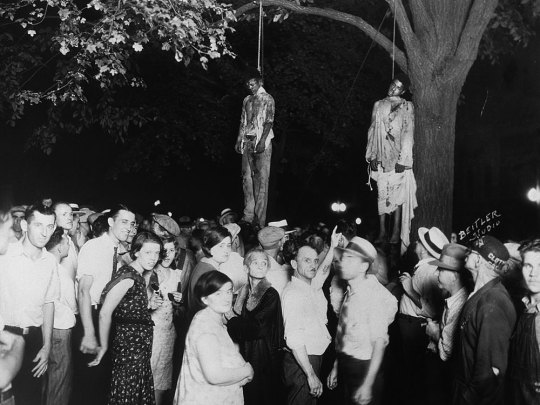
Many cases of Black men being lynched started from an accusation, or even rumor – in most cases of the rape of a white woman – but even the report that a Black man whistled to a white woman was enough for being lynched. This is the case of Emmett Till, a 14-year-old Black teenager who was abducted, beaten, and lynched by two white men in 1955 in Mississippi, for allegedly making advances to a white woman. His mother Mamie Till-Mobley made the revolutionary choice of making an open-casket funeral, attended by many Black Americans, in order to show the son’s mutilated body. To denounce what was done to the son, she allowed to photograph the dead body with her standing behind him, and pictures of the barely recognizable corpse were printed in influential Black magazines. Till’s murder and the photos that circulated changed the civil rights movement.
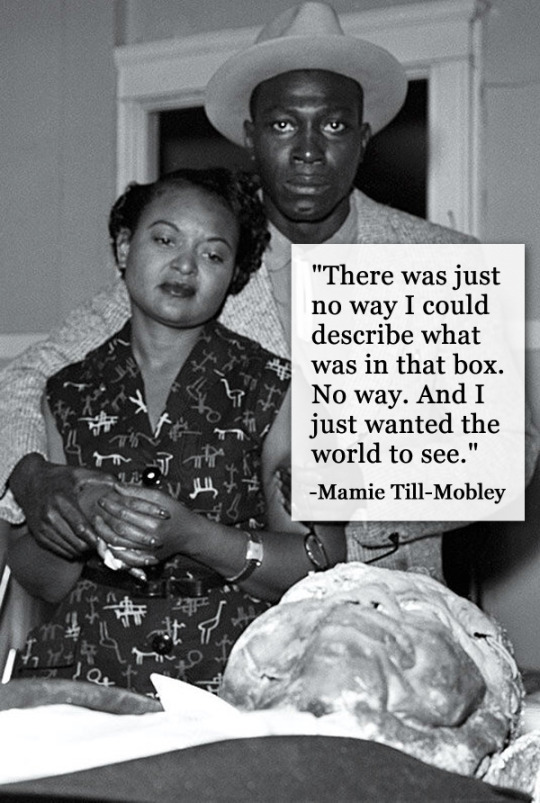
Vigilantes presented themselves as knights defending the honor of white women, leaving the crowd to commit the execution, in the name of the defense of their race, even if no one was attacking their race, but it was actually the opposite. Alleged rape of white women became the justification for the killing of many innocent people, ended up with impunity. According to Wells, in many cases, women involved claimed the innocence of the Black man accused, or to have been raped by a white man, or to not have been harassed at all. Nevertheless, it did not matter the voice of the victim or alleged victim in her testimony. What mattered was just to find a scapegoat to blame, and punish, to give an apparent sense of justice, or better to excuse killings of Black men.
During the Civil War and the following Reconstruction era (1865 to 1877), feminist associations in the US took as central in their agenda the protection of women in spite of their class and race. They called for measures to limit the power that husbands had on the married women, and for a broader right of protection. However, as they were mainly directed towards white men, and denounced lynchings as means to mask corruption of Southern institutions, they did not accomplish their aims. Many white feminists contributed to create the myth of the Black man as rapist, which was one of the main causes of impunity for the killings of African American men in that period. With this stereotype, they helped to build a racist ideology used by white supremacists. White feminist movements were also problematic for they saw the rape of Black women as an attack to the white race. They did not take into account the intersectionality of feminism.
In Audre Lorde's essay from "Sister Outsider", Lorde focuses on women of Color, saying that by ignoring the differences of race between women and their implications constitute a serious threat for the mobilization of women’s joint power. For this reason, it is important to consider not only feminism of white feminists, but intersectional feminism, including several different aspects, among which race, gender, sexuality, ethnicity, and other factors, and to take into account a broad variety of women’s struggles.
Dealing with intersectional feminism, it is worth mentioning Zanele Muholi, a photographer and filmmaker who passionately fights against enforced silence and invisibility on minorities. The artist, who prefers to be defined as a 'visual activist', is one of the founders of the Forum for the Empowerment of Women and of Inkanyiso, a platform dedicated to queer and visual activism. She was initially best-known for Faces and Phases, an evolving archive of portraits of black lesbian women from South Africa. Her award-winning documentary Difficult Love (2010) and Faces and Phases are more than an attempt to describe Muholi's life, or to testify to the existence of black queer communities. Both productions can be read as post-colonial feminist works. The importance of self-representation is central to Hail the Dark Lioness, a series of self-portraits, which include pictures in which the artist seeks the viewer's gaze defiantly or directly, just as some BLM protesters did with police officers. Muholi's works focus on the themes of race, gender and sexuality. Her photographic project that testifies not only to her artistic activity, but also the testimony of the artist who has long been committed to defending the rights of women, particularly of black lesbians, to whom it is imposed marginalization.

Ultimately, during the Reconstruction era, as put by Wells, rape was merely a pretext to blur the real problem, that was maintaining the subordination of African Americans. Later, in the 1930s, many Southern organizations joined the anti-lynching movement, labelling lynching for what it was: a racist crime, and not a legitimized reply to the rape of white women. There was also the first anti-lynching organization in the white supremacist women’s moment, the Association of Southern Women for the Prevention of Lynching (ASWPL). For the first time, a white organization claimed that Black men were not born rapists, nor responsible for the crimes they were being lynched for. In this way, ASWPL members joined the fight against sexual exploitation of women, and by denouncing lynchings of Black men, also against racial violence. ASWPL’s revolt tried to make the defense of white women the responsibility of the women only, to break the ties with white patriarchy, and the justice of the culture of vigilantes, which were exposed as being “racist murderers”.
At the beginning of the 21st century, with women’s presence in the military – as shown in Abu Ghraib prison’s images, depicting torture involving also female American soldiers – white women were given powers for the “self-defense” of the nation, to humiliate the enemy. In a different context, the participation of women in professions traditionally for men could be seen as an achievement for equality. However, in this case, there was a shift from white men defending “their” women, to “their women” sent to defend white men from the “other”, the enemy. From a feminist perspective, instead of solving the power dynamic man/woman, it seems that this gave rise to a new pattern. Although these women freed themselves from the condition of weak victims to be protected, they did so through embracing the violence typical of the oppressor, becoming just as aggressive as the classic heterosexual white man. White women became the last mean of civilized domination over what was seen as the “deviant”, “barbarous” men (the Orientals). Women vigilantes were used to offend Muslim sensibility even more, portraying to sodomize Arab men. This goes against the primary feminist idea of reaching equality and dismantling hierarchies.
2 notes
·
View notes
Link
2 notes
·
View notes
Text
Elsa Dorlin – Cinsiyet, Toplumsal Cinsiyet ve Cinsellikler (2023)
Feminist felsefelerin külliyatı, feminist direnişlerin tarihine göbekten bağlıdır.
Elsa Dorlin’in bu kavrayışla yola çıkan kitabı, feminist düşünce ile mücadeleler tarihine ve feminist felsefeye büyük katkı sunuyor.
Feminizm dalga dalga yayılıyor.
Her yeni dalga yeni bir devrimi de beraberinde getiriyor.
Peki, erkek egemen toplumların kıyılarını aşındıran bu devrimci dalgalar bugüne kadar neleri…

View On WordPress
#2023#Cinsiyet Toplumsal Cinsiyet ve Cinsellikler#Elsa Dorlin#Feminist Teoriye Giriş#Fol Kitap#Umay Vardar
0 notes
Text
Week 4: Self Defense and Its Relation to Violence
"Self Defense: A Philosophy of Violence" by Elsa Dorlin. Is a philosophical examination of the concept of self-defense and its relationship to violence. Exploring the historical, legal, and political dimensions of self-defense and provides a critical analysis of the various theories and practices of self-defense. Self-defense is a complex issue that is not limited to a simple binary of violence or non-violence, but instead encompasses a range of responses to violence, from physical resistance to political action. The reading is aimed at scholars, students, and general readers interested in philosophy, political theory, and issues of violence and self-defense.

"Endangered/Endangering: Schematic Racism and White Paranoia" written by Judith Butler that explores the topic of racial prejudice and its impact on society. Arguing that white paranoia and schematic racism, a form of implicit bias, are contributing to the endangerment of marginalized communities and perpetuating systems of oppression. These insidious forms of racism can be challenged and dismantled through education, activism, and solidarity. Drawing upon the intersections of race, gender, and sexuality to illuminate the ways in which these forms of racism intersect and work together to create a society that is hostile to marginalized communities. The reading engages in a critical reflection of our own biases and work towards creating a more equitable and just society.
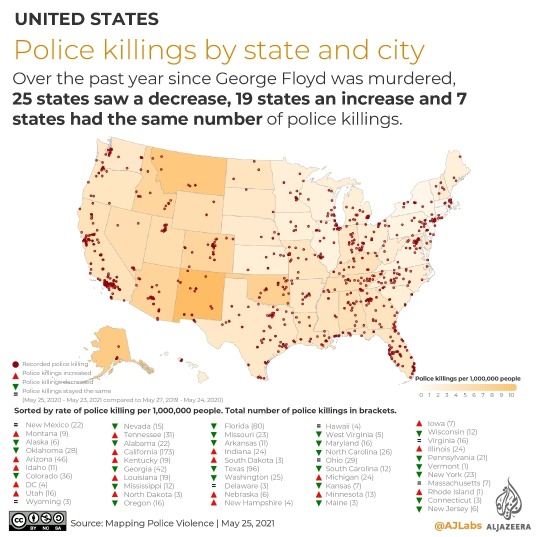
“Urban Uprising” by Robert Gooding Williams provides insight into the events leading up to the 1992 Los Angeles riots. The reading delves into the life of Rodney King, an African American man who was beaten by police officers in 1991. This event was captured on video and was widely televised, leading to widespread public outrage and demonstrations. Examining the events surrounding the Rodney King incident and its aftermath. The readings provide a thorough account of the trial and subsequent acquittal of the police officers involved, as well as the public outcry that followed. The readings also discuss the role of the media in the events, including the ways in which the media covered the riots and the impact that this coverage had on public opinion. The reading is well-researched and provides a comprehensive understanding of the Rodney King incident and the riots that followed, including racial tensions and inequalities in the criminal justice system. The reading highlights the importance of recognizing and addressing these issues in order to create a more just and equal society. It is a must-read for anyone interested in social justice and the role of the media in shaping public opinion.
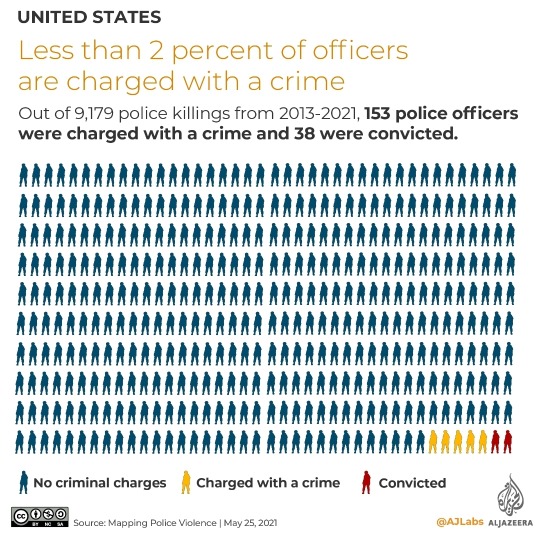
The Rodney King beatings happened 31 years ago and it wasn’t the first and certainly not the last case of police brutality in America. Just in the first few weeks of the new year, law enforcement officers in America have already killed at least seven unarmed individuals. Such a commonality that these numbers will be outdated by the time of reading this. These incidents raise questions about the use of excessive force by police and the need for increased accountability and transparency in law enforcement agencies. Each of these deaths and many more unlawful arrests against minorities is a tragedy and highlights the urgent need for reform and change in the way law enforcement officers are trained and how they approach interactions with the public. The families of these victims deserve answers and justice. It is also important to recognize that these incidents are not isolated, but part of a larger pattern of police violence against people of color, particularly Black individuals. The systemic racism and biases that exist within law enforcement must be addressed and eliminated in order to ensure that all individuals are treated fairly and humanely. It is crucial for law enforcement agencies to implement better training and policies, including a stronger focus on de-escalation techniques and the use of non-lethal force. Additionally, there must be increased accountability for officers who use excessive force, including independent investigations and consequences for those who violate the law.

0 notes
Text
Blog 3 - CMS/PL 348
Elsa Dorlin: Self-defense
What is self-defense?
If we look for the definition of self-defense on google, here is the explanation given: “the use of reasonable force to protect oneself or members of the family from bodily harm from the attack of an aggressor, if the defender has reason to believe he/she/they is/are in danger. Self-defense is a common defense by a person accused of assault, battery, or homicide.” Given the definition, it is clear under what conditions using self-defense is necessary.
However, in the book written by Elsa Dorlin “Self-defense”, there are horrific stories defining self-defense as daily life, and social behavior devoted by white people towards black bodies. The victims would rather share their stories with the public authorities rather than with the delegates. Because delegates would question whether it was right to self-defense or if it was right to keep the violence with no justice. Dorlin, tells that the right to armed self-defense was in the Anglo-Saxon legal culture, but somehow it was shaped in a very different direction. The violence, used in the name of self-defense transformed into atrocities, because white privileged men would hunt black communities with no mercy and as if they were animals. With the example said, we go back to the Abu Graihb event, prisoners being photographed as if they were winning a trophy from hunting. The purpose for a person to own a weapon was an amendment to the Article VII of 1689 with the Bill of Rights, which allowed the military force and police to have arms to protect civilians from extreme violence.
Everything began in England, in 1689 when bearing arms became basic for all Protestants. The framework for self-defense was harmonious alongside a Parliament. In England allowed owning guns for self-defense was normal because, besides self-defending, they were also working as vigilantes. Vigilantes, meaning that these people that owned weaponed would protect the city, by killing anyone who would thief, rob, and commit criminal actions. When the British colonized the Americans, this custom of ‘vigilantes’, was also obtained by the Americans. However, Americans completely misinterpreted the right to self-defense because it led to a violent debate in the political culture. The term, vigilantism became racialized. The term self-defense, in America, became manhunting because white people would kill Black men and young boys without knowing the truth of what really happened. Black communities were imprisoned because they refused to interact with white men or women for fear of being hunted down, lynched, or turned into a spectacle subject for everyone. The self-defense law was becoming uncontrollable because there were so many killings of black people. On the other hand, the white people were considered to be these fantastic hero figures saving and cleaning up the mess. In 2020, George Floyd was killed and suffocated by the police force, and other episodes just happened in 2023 Tyre Nichols was chased and killed by the police force, only because he was a black man, the controversy of this event is that he was killed by black cups. We can see the clear meaning of a broken system, which Buttler defines as white paranoia, which it showed the fear of black, and these people are also whitewashed.
In this video, we can see the case of George Floyd, and how brutal the police forces are against him:
youtube
This is an article where it includes a video and explanation of how Tyre Nichols was chased by police and killed:
Nevertheless, Judith Butler in her book “Endangered/Endangering: Schematic Racism and White Paranoia”, talks about the videos are no evidence to prove the innocence of the person being victimized, but rather to make the case stronger against the victim. In this book, she analyzes this perspective, on an event that happened with Rodney King who on March 3, 1991, was beaten by Los Angeles Police Department officers during his arrest after a pursuit for driving for while and not stopping right away. Kings’ assault was captured on a videotape and presented on the court during the trial, yet, the jury defined his unconsciousness after being beaten so many times he was a danger to the many police assaulting him. And we can see that even in the cases of Floyd, and Nicholas justice was not accurately followed or carried through. The policemen committing these crimes are not clearly punished or given a punishment because the justice system itself is blind to the situation. You can clearly see that America has a problem with people of color or a different background. When it comes to the murder of black people, it always happens in America and mostly they are done by the police.
There is a really good example that also shows in movies, how society is broken. This movie shows the reality of how these black communities live every day in the US. This particular movie really stuck in my mind when I saw 'The Hate You Give", this movie is based on books and then filmed. The movie and the book explain exactly how American society is divided between black and white, and this movie clearly explains it in all detail.
youtube
trailer of the movie that summarizes the context.
These videos were seen by the whole world, and yet the American justice system did not see what the rest of the world saw. As it says Butler, in her book the videos are being violently decontextualized, but violently recontextualized for the jury to believe the words of policemen’. In the case of King, during his trials, the jury misread the video and incriminated King for trying to stand up. For example, the policemen were convinced that if they stopped hitting him he would have stood up and rebelled. We can see another example of white paranoia and vigilantism actions trying to be this white perfect hero. So many movies were made out of all these events, and it seems like it only increases hate crime, then eliminate it. This evidence, and the jury's conclusion we can see that this is not a matter of negotiating between what is "seen," on the one hand, and what is "seen" on the other hand. But one thing is for sure, there is a racist organization and arrangement of visibility in America.
0 notes
Text
12.02. READINGS WEEK 4
Born green we were
to this flawed garden,
but in speckled thickets, warted as a toad,
spitefully skulks our warden;
fixing his snare
which hauls down buck, cock, trout, till all most fair
is tricked to faulter in split blood.
Now our whole task’s to hack
some angel-shape worth wearing
from his crabbed midden where all’s wrought so awry
that no straight inquiring
could unlock
shrewd catch silting our reach bright act back
to unmade mud cloked by sour sky
FIRESONG, SYLVIA PLATH
SOMETIMES, TO - HACK SOME ANGEL SHAPE WORTH WEARING - DOES NOT COME EASY.
THE DIFFICULTIES ARISES WHEN WE ANALYZE WHAT ARE THE IMPLICATION OF OUR WARDEN BEING SKULKED IN VISION CULTURE, SPITEFULLY SHAPING HISTORY’S NARRATIVE.
FOR OUR WARDEN BEING THE POWER, BUT IN SOME CASES, FOR OUR WARDEN BEING OUR ANCESTORS.
OUR PEERS. THEREFORE, US TOO.
IN DISCUSSING THE MOTIVATIONS BEHIND THE U.S. LOYALTY TO THE SECOND AMENDMENT, MEANING THE RIGHT TO BEAR ARMS, ELSA DORLIN CONJUNCTS IT TO JOHN LOCKE’S PRINCIPLE OF SELF-PRESERVATION, BY WHICH WE ARE ALL ENTITLED TO PRESERVE OUR EXISTENCE.
IN THIS, LOCKE POSES 4 IMMUTABLE PRINCIPLES, EQUAL TO US ALL:
LIFE, SECURITY, FREEDOM, PROPERTY.
THESE WOULD CONTRIBUTE TO SELF-PRESERVATION, MEANING FULFILLMENT.
BUT FOR AS MUCH AS THIS CONCEPTION PLACES ITSELF IN CONTRADICTION WITH THE 17TH-CENTURY NOTION OF A KING’S DIVINE RIGHT, BY READING DORLIN WE UNDERSTAND THAT WHAT IT CREATES IS IN FACT INEQUALITY.
WHAT IF I FEEL MORE FREE AND SECURE IN CONTRAPOSING MY LIFE TO SOMEBODY ELSE’S?
ELSA DORLIN RIGHTLY POINTS OUT, ALSO, HOW THE PRINCIPLE OF SELF-PRESERVATION, MERGED WITH THE INSEPARABILITY OF HUMAN AND THEIR PROPERTY, HAS RESONATED IN THE CREATION OF VIGILANTISM.
BY LOOKING AT 19TH-CENTURY SELF-ORGANIZED GROUPS OF VIGILANTES, COMMONLY UNITED IN THE DEFENSE OF PROPERTY THROUGH THE USE OF GUNS, AND BY THINKING AT CHARLES LYNCH’S VIGILANTES GROUP EXAMPLE, GRANTED BY LEGISLATORS, WE THEN UNDERSTAND THE IMPLICATIONS THAT NOWADAYS MAKE POSSIBLE THE ABSOLUTION OF BLACK PEOPLE'S KILLERS.
IN THIS, IT IS IMPORTANT TO ACKNOWLEDGE HOW THIS WAS ALL MADE POSSIBLE BOTH THROUGH THE HELP OF POWER, BUT IN THIS, BY AN ENTIRE SOCIETY THAT AGREES WITH IT.
FOR IF THE NICHOLAS MIRZOEFF’S IDEA OF POWER IS HERE REPRESENTED BOTH BY VIGILANTISMS GROUPS AND GOVERNMENTS WHO ALLOWED THEM TO WORK AT THEIR PLACE, WE PEOPLE ARE TO BLAME TOO.
THIS IS PROMINENTLY AFFIRMED BY ELSA DORLIN, WHEN SHE BLAMES 20TH-CENTURY WOMEN FEMINISTS, WHO ARE GUILTY OF GRASPING A SOCIAL STATUS IN A SANCTIMONIOUS MANNER. WHICH IS, TO DENOUNCE RAPE AS A CHALLENGE TO THEIR WHITE PURENESS. AND BY DOING SO, THEY FORGOT ABOUT THEIR BLACK SISTERS, WHO WERE THE ONES MORE AFFECTED BY SUCH HORRORS.
AND, MORE SO, THIS IS RIGHTLY REPRESENTED BY THE 1916’S JESSE WASHINGTON EXAMPLE; THE LYNCHING OF A 17-YEAR-OLD BOY WHOSE BODY PIECES WERE SOLD TO THE PUBLIC AS SOUVENIRS.
THEREFORE, WHEN WE TRY TO RECONNECT ALL AS THE BASE FOR THE JUSTIFICATION OF OUR DAYS’ RACIAL ACTS, THIS ADMISSION MUST COME FORWARD.
THAT FOR AS MUCH AS THE POWER DID SEE REALITY VIA THE HOLES OF A KKK'S MASKS, BY PUTTING FORWARD A MIRZOEFF’ SIGHT-WAY OF SEEING, INSTEAD OF PSYCHOLOGICALLY VISIONING IT, WE ALL ARE THE ONES WHO WERE SEWING KKK’S COSTUMES.
BY READING DORLIN’S OVERVIEW OF WHITE SUPREMACY’S DEVELOPMENT, WE THEN UNDERSTAND JUDITH BUTLER’S CLAIMS ON RODNEY KING’S CASE.
IN PARTICULAR, SHE BUILDS ON THE CAUSES OF THE ABSOLUTION OF THOSE AGENTS WHO, AS A VIDEO RECORDED BY A CITIZEN CLEARLY SHOWS, HAVE BEATEN KING ALMOST TO DEATH, AFTER HE WAS TRYING TO ESCAPE THEM.
BUTLER POINTS OUT HOW THE ENTIRE CASE HAS BEEN SEEN VIA A RACIAL LENS. SHE BRINGS UP, THEN, INSTANCES LIKE THE USAGE OF VIDEO’ STILLS TO CLAIM THAT KING WAS TRYING TO ASSAULT THE GUARDS.
IN THIS, AN HISTORICAL PERCEPTION OF THE BLACK BODY AS DANGEROUS AND POSSESSING VIOLENT CHARACTERISTICS IS WHAT ADVOCATES VIOLENCE AGAINST HIM.
SINCE EVERY VIOLENCE IS JUSTIFIABLE WHEN IT COMES FROM US ENACTING OUR PRINCIPLE OF SELF-PRESERVATION.
IN KING'S ISSUE, ONE ELEMENT THAT JUMPS OUT IS THE CITIZEN VIDEOTAPING POLICE BRUTALITY.
MIGHT THE CAMERA DEPICTING THE EVENT BE THAT ANGEL-SHAPED SYLVIA PLATH WANTS US TO HACK?
WE KNOW THIS IS OUR TASK, TO CONTINUE THE STEPS TOWARDS UNSEATING THE WARDEN.
BUT SOMETIMES, WHEN WE ACKNOWLEDGE THAT OUR BRIGHT ACTS ARE CONCEALED UNDER A SOUR SKY,
WE END UP UNDERSTANDING PLATH,
AND INSTEAD OF HACKING, WE JUST WANT TO REPAIR OURSELVES FROM ALL THIS CRABBED MIDDEN.

SYLVIA PLATH
1 note
·
View note
Text
https://ladyonfire28.tumblr.com/post/667030184033222656/feu
1 note
·
View note
Photo
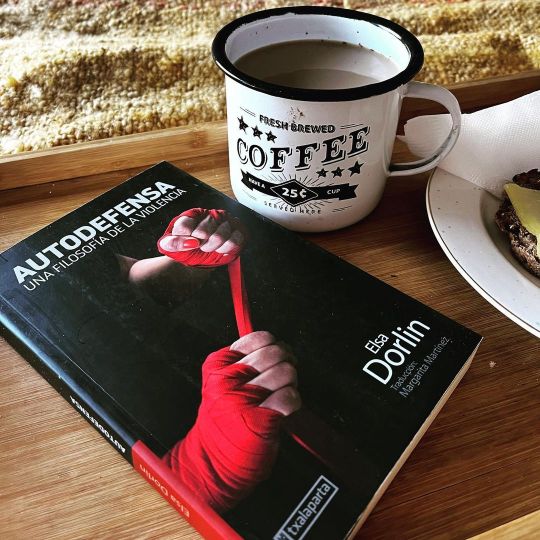
Para desayunar hoy: "Autodefensa. Una filosofía de la violencia" de la filósofa feminista Elsa Dorlin, café con leche y pan negro con queso 😋. Libro encontrado gracias a @alma_negra_libreria .#Domingo (at Santiago, Chile) https://www.instagram.com/p/CeJNRJMOslx/?igshid=NGJjMDIxMWI=
0 notes
Text
L’un des enjeux majeurs du féminisme contemporain pourrait bien être sa capacité à produire des outils de compréhension du monde social capables d’en modifier le rapport de force : comprendre un monde dans lequel il pourra rester à même d’agir politiquement et de résister de façon solidaire. Pour ce faire, il a tout intérêt à perpétuer une certaine tradition de pensée qui a choisi de fabriquer ses propres outils d’analyse pour saisir la domination, mais aussi, et surtout, pour saisir les chemins de traverses, les espaces de rencontre des luttes, les coalitions solidaires comme les utopies.
De l'usage épistémologique et politique des catégories de « sexe » et de « race » dans les études sur le genre, Elsa Dorlin Dans Cahiers du Genre 2005/2 (n° 39), pages 83 à 105
#Elsa Dorlin#feminism#gender#race#intersectional feminism#revolution#genre#féminisme#féminisme intersectionnel
1 note
·
View note